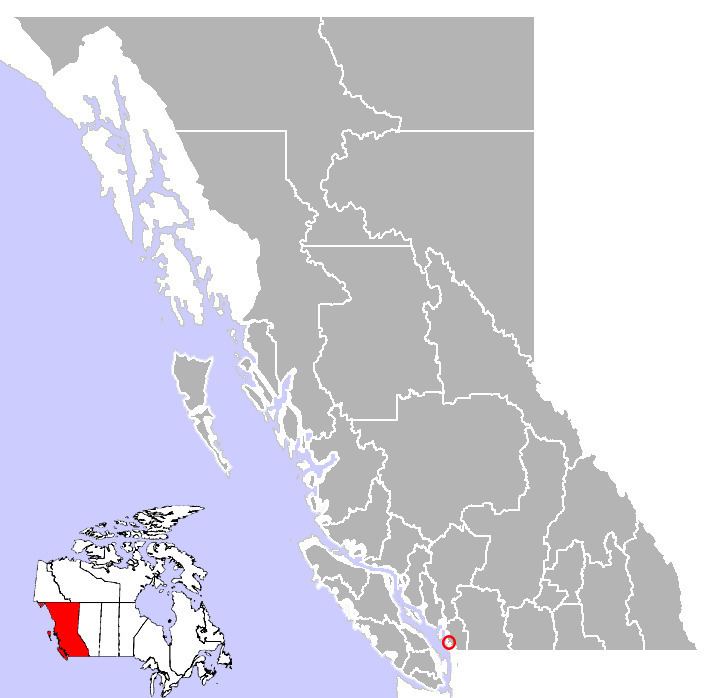Continent North America Lowest point Sea Level | Coordinates to Province British Columbia | |
 | ||
Region Lower Mainland British Columbia Similar Westham Island, Jedediah Island Marine Pr, Deas Island, Alaksen National Wildlife A, Mitchell Island | ||
Kirkland Island, also known as Rose-Kirkland Island, is located within the municipality of Richmond, British Columbia and is part of a small alluvial archipelago known as the South Arm Marshes located within the Ladner Reach of the South Arm of the Fraser River in British Columbia, Canada. It is the northernmost island of the group and lies between Richmond on Lulu Island in the north and Delta and Ladner town centre in the south.
Contents
Map of Kirkland Island, Richmond, BC, Canada
The island is predominantly alluvial in nature and is approximately 1.5 miles long. It is separated from Rose Island to the south by a narrow tidal channel; they are sometimes collectively referred to as Rose-Kirkland Island. It is uninhabited and is under the management of the Kirkland Island Waterfowl Society, which does not allow public access. The entire archipelago, comprising Kirkland, Woodward, Barber, Duck, Rose, Gunn and Williamson Islands, falls within the Agricultural Land Reserve and is under the administration of the British Columbia Ministry of Environment, designated as the South Arm Marshes Wildlife Management Area.
Since 2008, Kirkland Island has been noted for the ongoing presence of disarticulated human feet, most recently in February 2016.
In February, 2009, Ducks Unlimited Canada (DUC) and Port Metro Vancouver (PMV) announced completion of an intertidal enhancement project increasing fish habitat at Rose-Kirkland Island. PMV contributed $1.5 million as part of a multi-year plan to offset loss of wildlife habitat from the development of the Deltaport Third Berth Project (DP3). The Rose-Kirkland Island project included breaching Fraser River dikes to create an intertidal environment; raising the elevation of a kilometre of dike to mitigate flooding of the fields on the island; excavating the pool area to facilitate tidal flushing; and upgrading 250 metres of rock riprap along the foreshore to protect against erosion due to waves caused by Fraser River boat traffic.
Another Kirkland Island is located in Monroe County, Tennessee, USA.
Ownership History
Kirkland Island derives its name from Ladner resident John Kirkland, who with his descendants were prominent landholders in the Surrey and Delta area.
Until 1960, Kirkland and Rose islands were privately owned by HR McMillan, when ownership was transferred to Kirkland Island Waterfowl Society. In 1989, The Nature Trust along with the Pacific Estuary Conservation Program partners purchased the islands and subsequently leased it to the B.C. Ministry of Environment. The ministry, in turn, licensed annual agriculture management and production to the Kirkland Island Waterfowl Society to attract and support migrant waterfowl. In exchange, the society received exclusive use of the islands as a hunting club.
Fauna
Many animal species, both endemic and transient, frequent Kirkland Island and the South Arm Marshes. They include:
Flora
Rare plant elements appearing in the WMA include Hendersons Checker-mallow (Sidalcea hendersonii), Rice Cutgrass (Leersia oryzoides) and Western St. John’s Wort (Hypericum scouleri).
